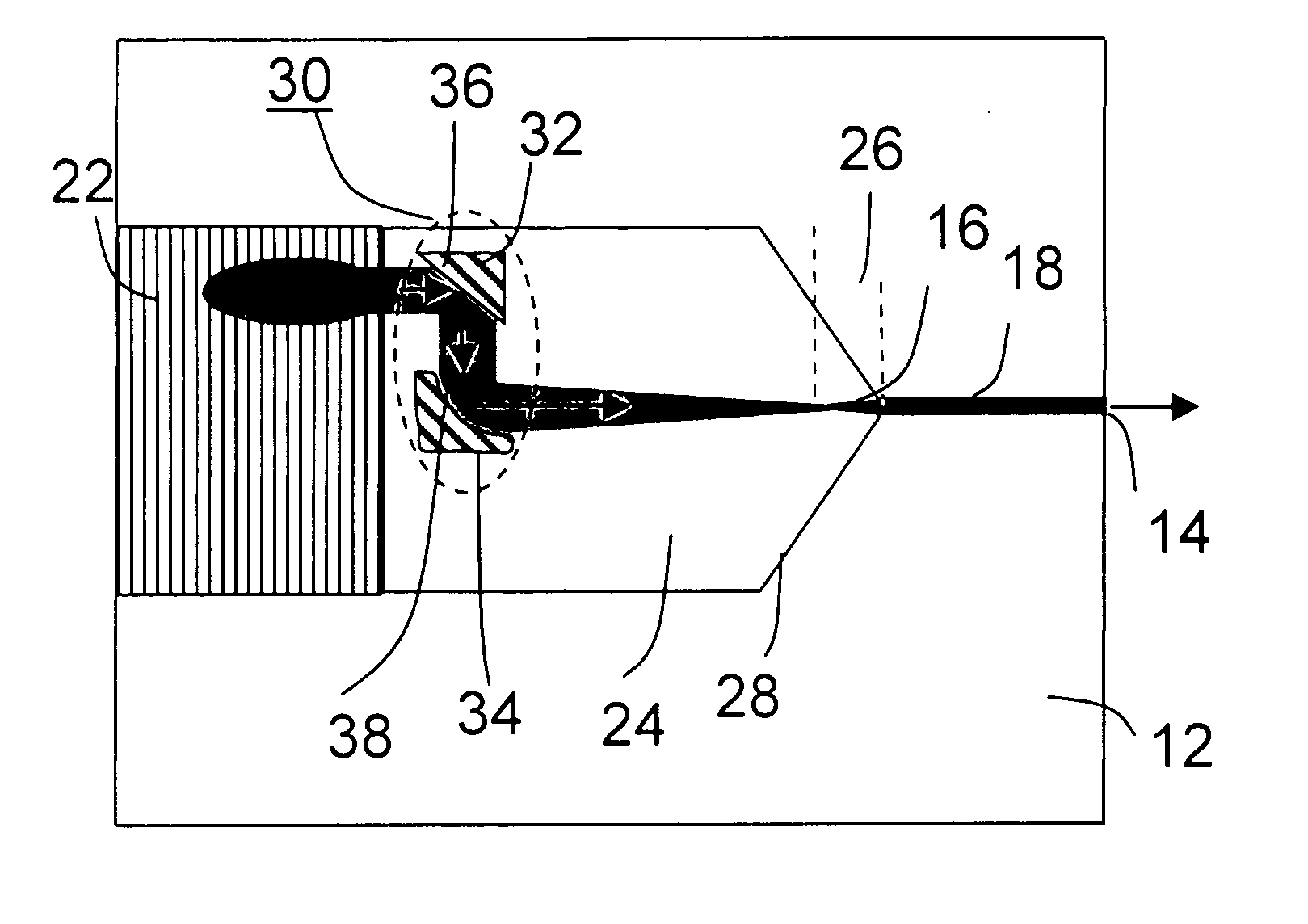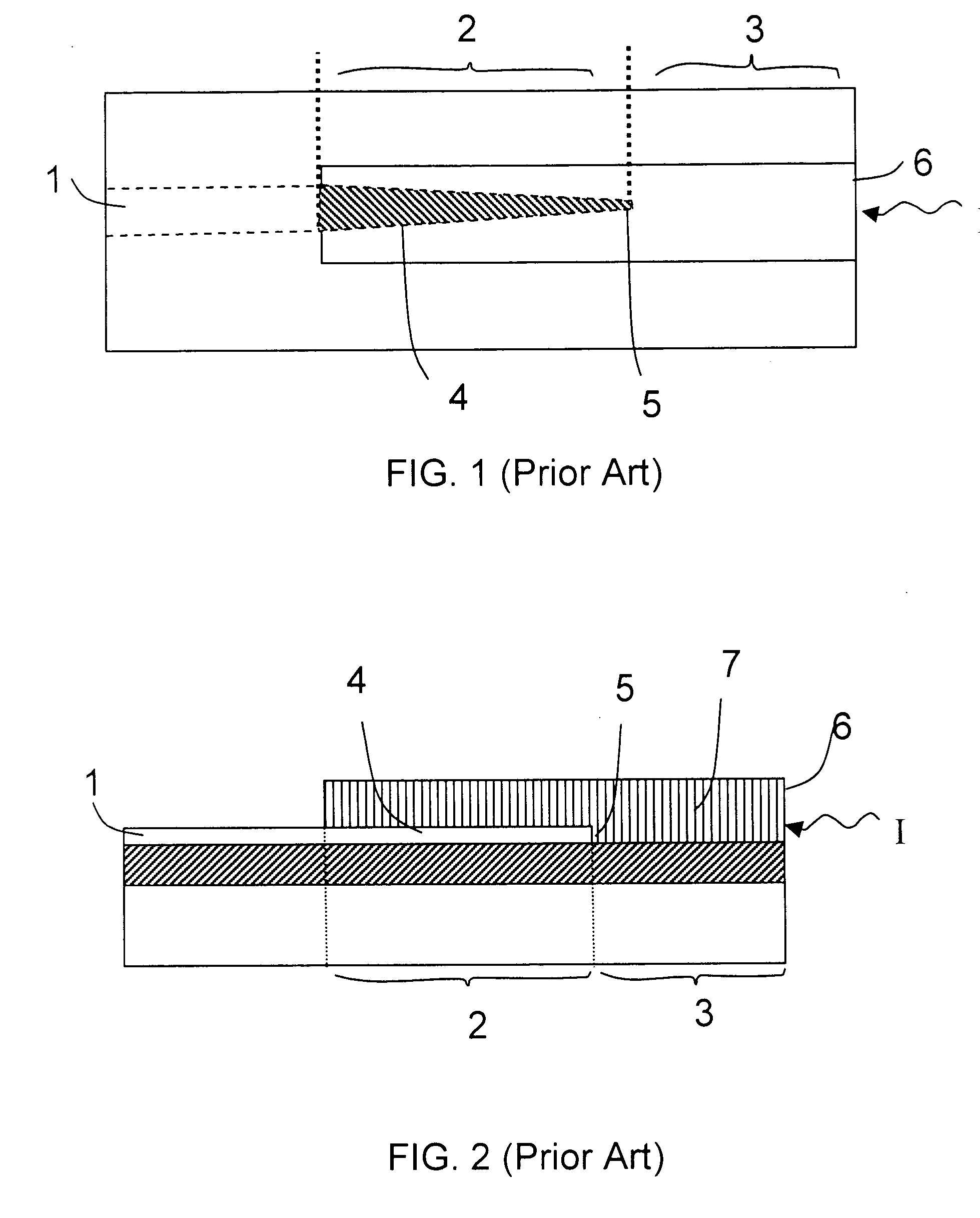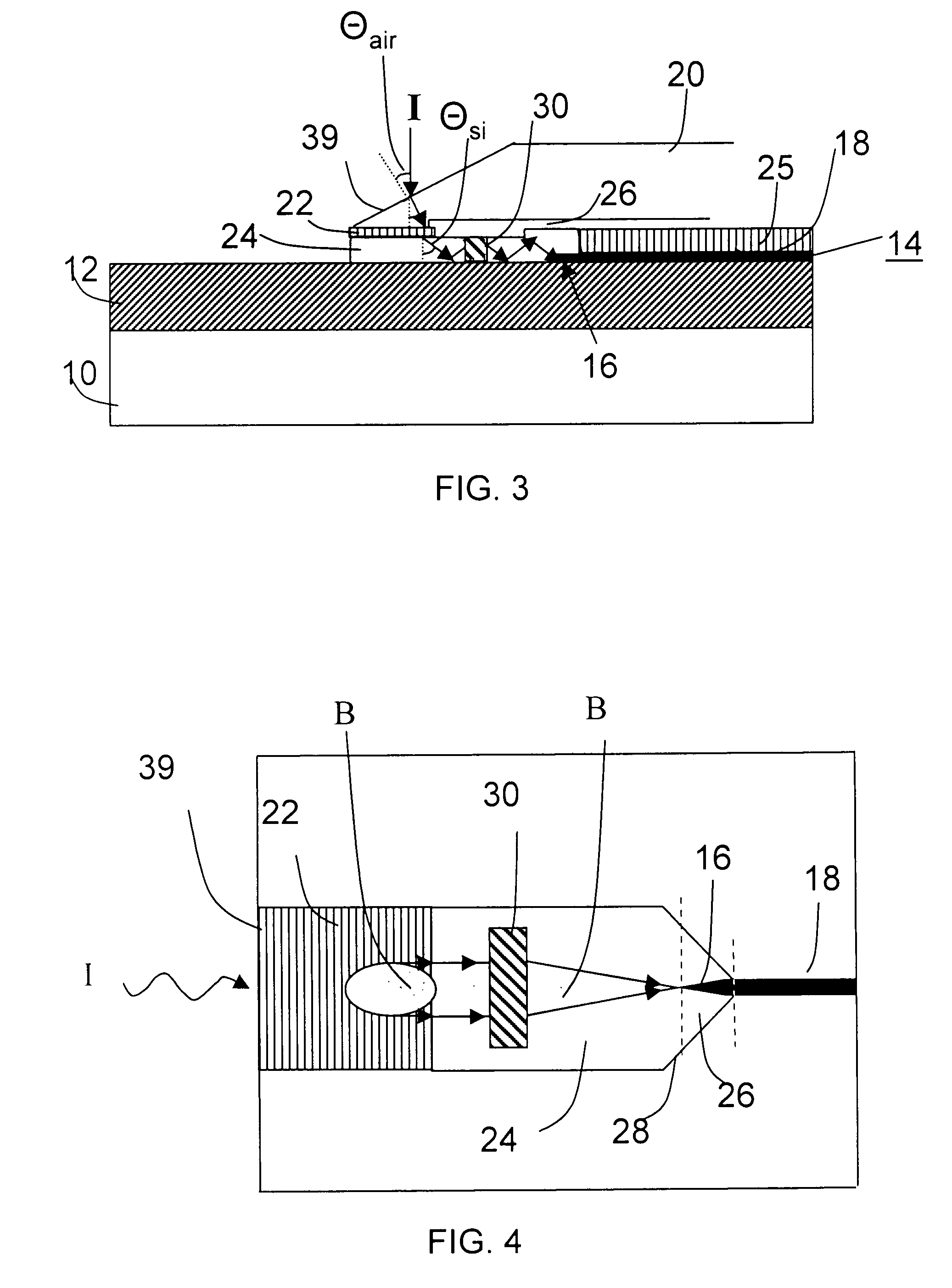Silicon nanotaper couplers and mode-matching devices
- Summary
- Abstract
- Description
- Claims
- Application Information
AI Technical Summary
Benefits of technology
Problems solved by technology
Method used
Image
Examples
Embodiment Construction
[0032] The utilization of a hybrid coupling arrangement comprising a silicon-based nanotaper coupler and free-space optical coupler, in accordance with the present invention, addresses many of the problems associated with the prior art end-fire couplers and offers additional flexibility with respect to wafer-scale fabrication and free-space optical coupling. FIG. 3 contains a side view, and FIG. 4 a top view, of an SOI-based exemplary hybrid coupler formed in accordance with the present invention. In most cases, the devices formed in accordance with the present invention will comprise an SOI structure including a silicon substrate 10, a silicon dioxide insulating layer 12 and an upper silicon device layer (hereinafter referred to as an “SOI layer”) 14, where SOI layer 14 generally comprises a thickness of less than one micron.
[0033] A silicon nanotaper 16 (best illustrated in FIG. 4) is formed within a portion of SOI layer 14 and used, as discussed above, to provide efficient coupl...
PUM
 Login to View More
Login to View More Abstract
Description
Claims
Application Information
 Login to View More
Login to View More - R&D
- Intellectual Property
- Life Sciences
- Materials
- Tech Scout
- Unparalleled Data Quality
- Higher Quality Content
- 60% Fewer Hallucinations
Browse by: Latest US Patents, China's latest patents, Technical Efficacy Thesaurus, Application Domain, Technology Topic, Popular Technical Reports.
© 2025 PatSnap. All rights reserved.Legal|Privacy policy|Modern Slavery Act Transparency Statement|Sitemap|About US| Contact US: help@patsnap.com



